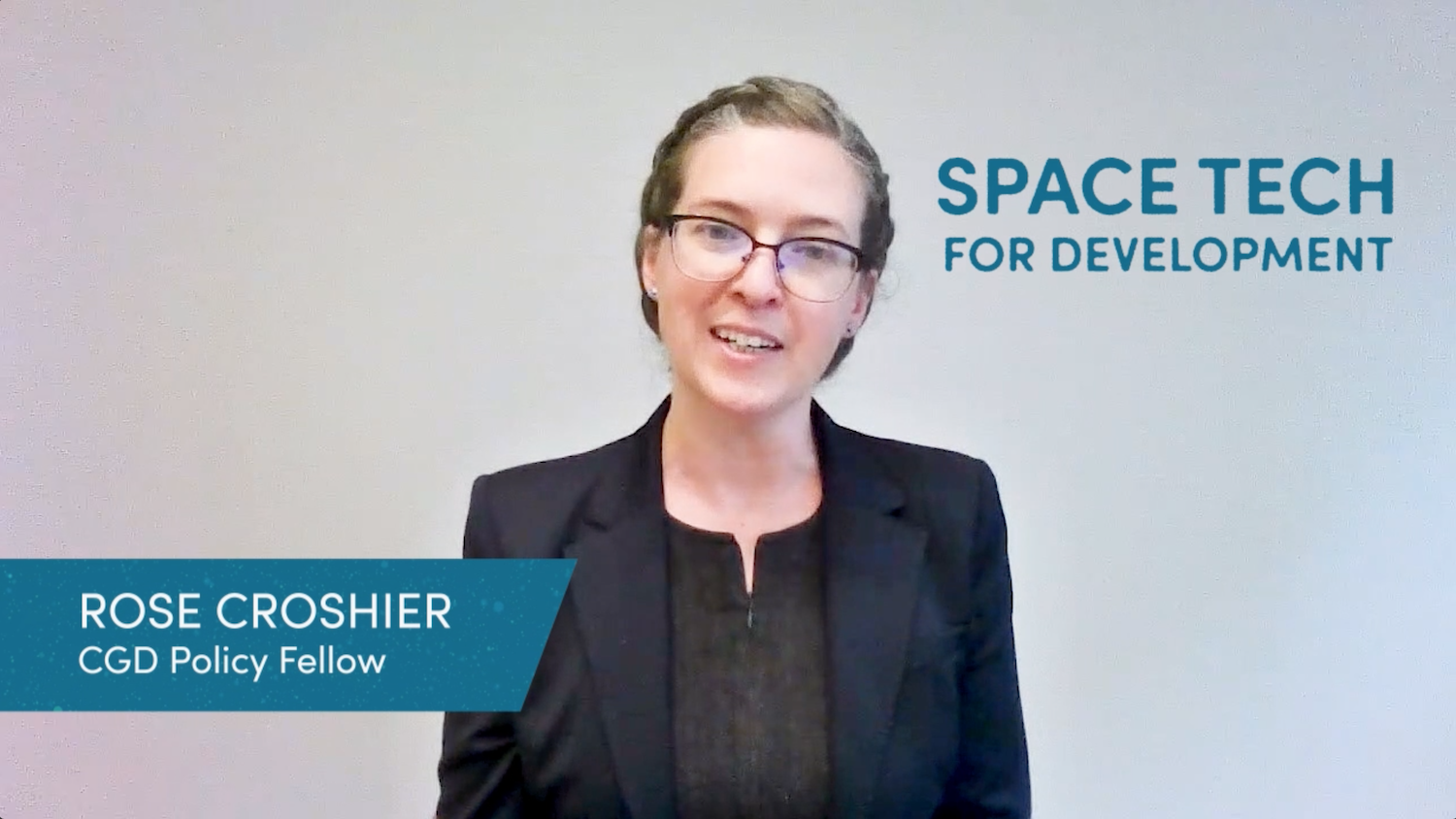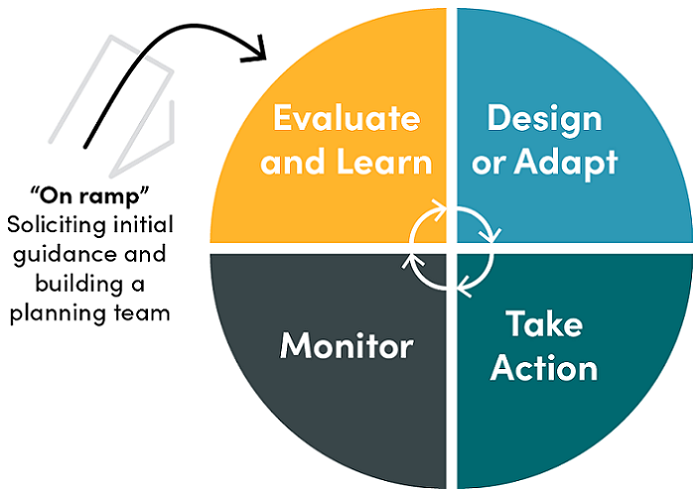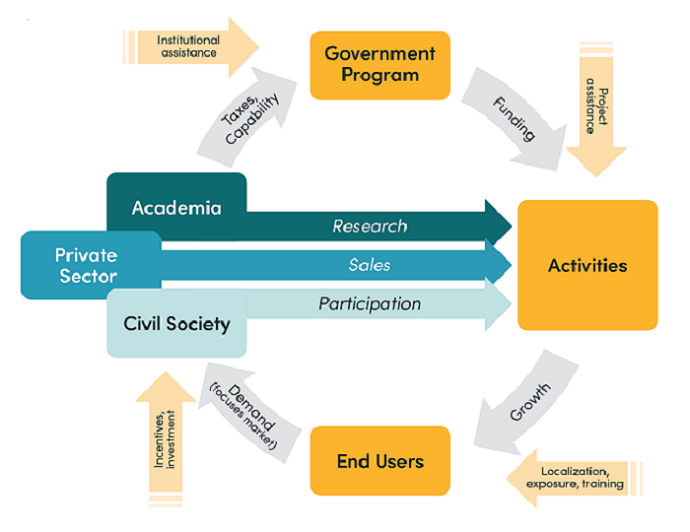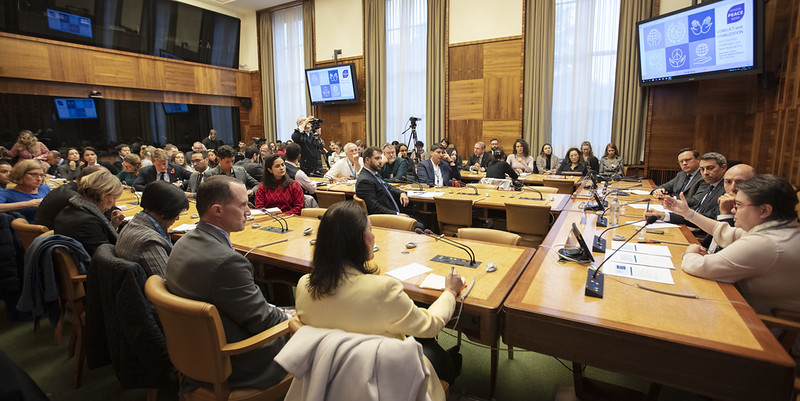Recommended
The e-book is available for download using Adobe Digital Editions, iBooks (Apple devices), or Google Play Books (Android devices). It is not compatible with Kindle.
Join us for the launch event for the handbook on May 10, 2023 at the CGD DC office. RSVP here.
The Handbook for Space Capability Development is an inclusive, pragmatic, and open-access resource focused on “foundational space capability” development. Its intended audience is the planner or planning team charged with drafting a national space strategy and building a national space program. Among its goals are to make a case for why all governments should establish a foundational space capability, to discuss what such a program might look like in real terms, and to suggest an approach for how to conduct early program design. The resulting foundational program, office, and strategy will be sustainable in scale, scope, and growth and will enable a country to
- Protect existing dependencies on space.
- More fully leverage existing space capabilities and applications.
- Encourage the growth of a local data and space ecosystem.
- Attract international and public-private collaboration and investment.
- Contribute to the development of norms and laws governing space.
Why space?
In short, satellites underpin telecommunications, utilities, financial institutions, and other elements of global daily life. If leveraged fully, satellites (Figure 1) can also accelerate economic growth, build resilience against natural and human-made disasters, and enable every one of the United Nations’ Sustainable Development Goals, among other uses. However, despite the clear connection of space applications to development, there persists a common misconception that building domestic space capabilities is a luxury reserved only for rich and powerful nations and that all space-related development is a herculean, cost-prohibitive task. On the contrary, while the degree of space investment and activity varies, even a modest national space program can provide an outsized return.
Figure 1. Types of satellites

What is space capability?
“Space capability” is the ability to access, use, and contribute to space-related infrastructure, as well as to access and use space-based natural common resources. These resources include the electromagnetic spectrum and room for satellites in particularly useful orbits (or “slots”). Space-related infrastructure includes satellites and associated ground-based systems. In the future, new natural resources will likely include various raw materials extracted from asteroids or the Moon, like metals and water, that would support Earth-based industry or further “in-space” activity, as in-space manufacturing, tourism, bases on the Moon and Mars, and so on. The focus of this Handbook is to describe those space capabilities best prioritized for an early space program—that is, foundational space capabilities.
A new space program intent on building foundational space capabilities does not necessarily prioritize putting a satellite into orbit or building a launch facility. Rather, it manages a continuous process through which a government can decide what effort would provide the best return on investment, considering a state’s priorities, concerns, economy, geographic advantages, and so on. A space program office should be a government focal point for space-related affairs and should have the following capabilities:
- Consultation, Advocacy, and Localization. Provide internal technical advice and fully leverage space resources and technology.
- Program Management. Deliberately plan and develop space capabilities.
- Coordination. Proactively engage internally with government organizations and with external academic, private, and social sectors.
- Representation and Regulation. Participate in the global space sector and in the development of rules and norms. Provide the regulatory structure needed to fully leverage space resources and technology.
In addition to providing space-related services to other government offices, a space program office can seed, and then accelerate, the development of a national space ecosystem. Such an ecosystem has various independent parts, or “systems,” that can be coordinated, integrated, and aligned, to achieve an overall greater national capability than the sum of its parts. A space program can also directly harness space capabilities—such as remote sensing; positioning, navigation, and timing (PNT); and satellite communications—to address specific national priorities.
How can states develop space capability?
There is no single way to establish foundational space capabilities. The actual method by which any country establishes or expands its capabilities is shaped by its history, culture, ideology, and political and environmental realities. Regardless, program design and implementation should be an iterative process, documented as a strategy, roadmap, or workplan that follows a deliberate, methodical, outcomes-focused process. That said, no plan is perfect, nor perfectly implemented, as both understanding of the challenges, needs, and political, budgetary, and other circumstances will naturally change over time.
Therefore, it is useful to envision program design and management as a repeating cycle with sequential phases for evaluation, planning, action, monitoring, more evaluation and learning, and adaptation, as illustrated in Figure 2. The “on ramp” to the program cycle is the action of soliciting initial national leadership guidance and appointing a dedicated planning team.
Figure 2. Program cycle
Leadership will need to allocate sufficient resources to the planning team to accomplish the task: people with dedicated time, a physical workspace, computers and internet connectivity, leadership support, and authority to communicate across departments and sectors and with stakeholders as necessary. The planning team’s output should be periodic reports to executive leadership or senior management, culminating in a proposal for the space program intent, goals, organization, and estimated costs. In other words, a strategy. This strategy should articulate a logical link from intent to action to expected outcome, and to a plan to evaluate progress. Using tools like a systems map; strengths, weaknesses, opportunities, and threats (SWOT) analysis; and logic models, a planning team will be able to answer the following key questions:
- What space capabilities do we need?
- What space capabilities and capacity do we have now?
- How should we focus and sequence our efforts to build space capability? (This includes components like human skills, policy, and regulatory framework.)
- How do we know the space program is successful?
A state has both domestic and international options to support the development of its space capabilities and greater space ecosystem. An ecosystem is a “system of systems” way of looking at space capability, recognizing that the government, academia, the private sector, and civil society are interdependent. Domestic incentives, such as scholarships, tax incentives, and contracts, can be used to spur space-related activity, which in turn may grow its use and further demand. A state may also elicit or facilitate support from philanthropic organizations, the academic and research community, and the development community. It may use bilateral and multilateral cooperation and assistance, or most likely, a combination of the above. See Figure 3.
Figure 3. Using financing and advising support to spur the space ecosystem
In conclusion, all countries use space applications daily. Those with a space program, however, are more prepared to absorb and magnify the benefits of space for the good of their economy and society. This Handbook’s cases for why one should build capabilities, what capabilities to build, and how to go about it must themselves be localized to be truly useful and sustainable for a particular state. One could say this process of localization is another name for “iterative program design.” The process of understanding satellites’ function and applications, the inward examination of domestic use and expertise, the exploration of possible building actions nested within national priorities, the relentless asking of why we should do this and how could we do this better are crucial elements to building foundational space capabilities and beyond.
Read the handbook here.
Rights & Permissions
You may use and disseminate CGD’s publications under these conditions.









